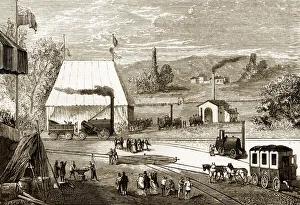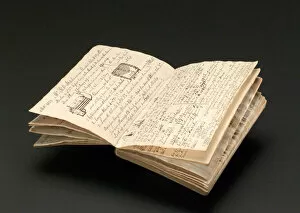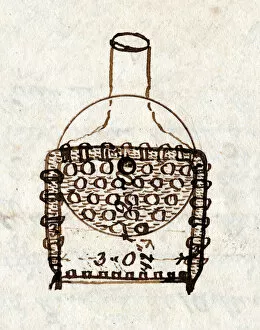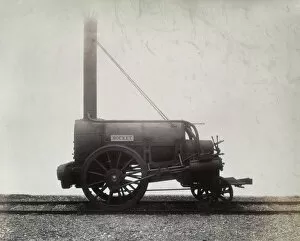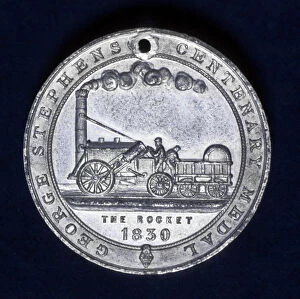Rainhill Trials Collection
The Rainhill Trials, held in October 1829, marked a pivotal moment in the history of locomotives and railway transportation
All Professionally Made to Order for Quick Shipping
The Rainhill Trials, held in October 1829, marked a pivotal moment in the history of locomotives and railway transportation. These trials were organized to determine the most efficient and reliable locomotive for the newly constructed Liverpool and Manchester Railway. John Urpeth Rastrick's notebook, filled with detailed records of the trials, provides valuable insights into this significant event. His pen and ink drawings depict Rockets firebox, offering a glimpse into its innovative design. The Rocket, designed by George Stephenson himself, became an iconic symbol of these trials. In one sketch from Rastrick's notebook, we see a side view of Rocket showcasing its intricate details. Another drawing captures the end view of this remarkable locomotive. These illustrations serve as historical artifacts that allow us to visualize the engineering marvel that was Rocket. Hackworth's note-book also contributes to our understanding of these trials with a pencil sketch depicting a spring-loaded safety valve. This invention played a crucial role in ensuring the safety and efficiency of steam engines during this era. A lithograph showcases Stephensons original firebox on his 0-2-2 locomotive Rocket from 1829. This lithograph serves as evidence of how far locomotive technology had advanced during this time period. Even years later, c1905 to be exact, George Stephenson's Rocket continued to captivate people's imagination as depicted in another chromolitho artwork. Its sleek design and powerful performance made it an enduring symbol of progress and innovation in rail transport. The Rainhill Trials forever changed the course of railway history by proving that steam-powered locomotives were not only feasible but also superior to other forms of transportation at that time. It paved the way for further advancements in railway technology and laid down foundations for modern-day trains that we rely on today.

